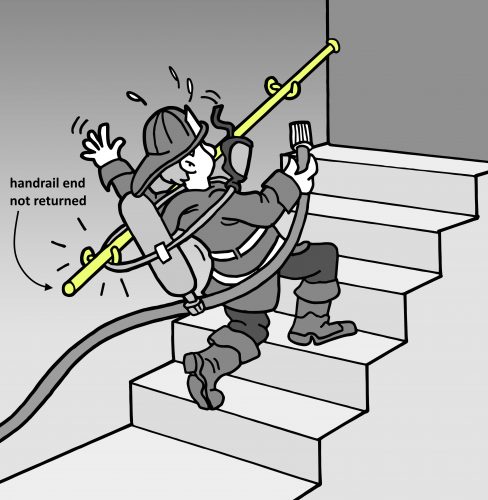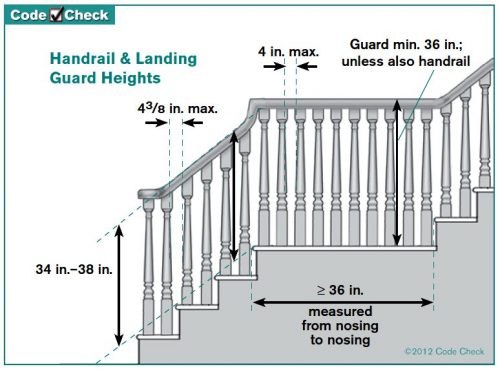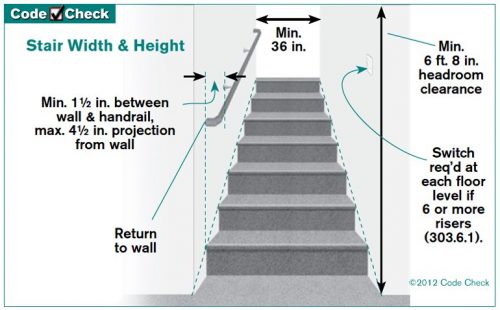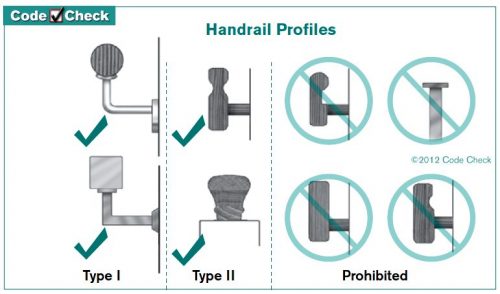Handrails are impossible to install correctly… without a little bit of knowledge. While stairway handrails might seem like a piece of cake, there’s actually a lot of planning that goes into them.
If you’re planning to sell a home in Minneapolis, you need to have handrails installed at all of your interior stairways with four or more risers. If you don’t have a handrail installed, it’ll be a required repair item as part of the city’s Truth-In-Sale of Housing (TISH) program. Now keep in mind, I didn’t say you had to have a properly installed handrail, although it would be nice. You just need to have a handrail. But if the handrail is missing, you’ll need to install a new handrail, and it needs to comply with current code requirements for a new home.
From our hundreds of re-inspections of new handrail installations, we’ve put together a list of the top 5 installation errors on new handrails, along with some helpful diagrams courtesy of the fine folks at CodeCheck. As long as you don’t make any of these mistakes, there’s a good chance that your new handrail will meet code requirements. And for the record, these rules apply to outdoor handrails too.
1. Handrail Ends Not Returned
Handrail ends must be returned to the wall to help prevent people from catching clothes or other items on the handrail. This one alone might make up about 90% of the installation errors.
2. Improper height
Handrails must be installed 34″ – 38″ above the sloped plane of the stairway. In other words, measure up from the ends of the treads.
3. Not continuous
You need to be able to walk up a stairway without removing your hand from the handrail. If a handrail stops and starts again, it’s not continuous. Also, the handrail must begin at the bottom of the stairway and end at the top.
4. Too close to the wall
If a handrail is less than 1-1/2″ away from the wall, it’s too close. You need to be able to get your hand around it.
5. Not graspable
You need to be able to grab the handrail and hold it, not just rest your hand on top of it. The diagrams below help to explain this.
If you can get these five items correct, there’s a good chance that your handrail will be properly installed. And again, the big one is having the ends returned to the wall. For the rest of the rules, turn to Section R311.7.8 of the Minnesota State Building Code.




